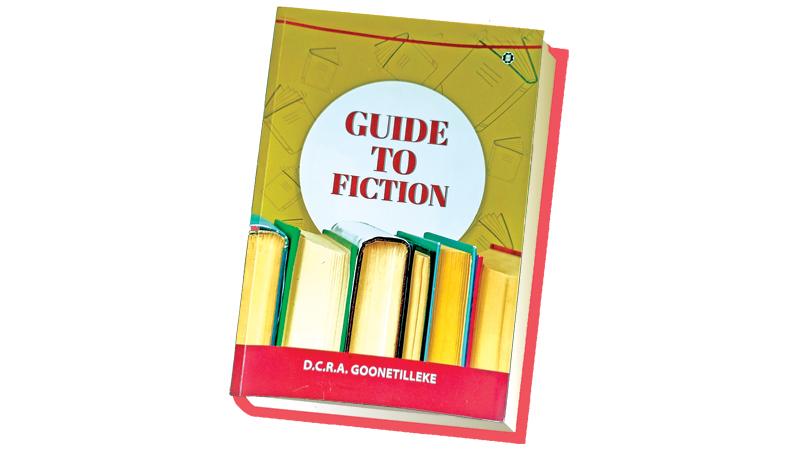
Title: A Guide to Fiction
Author: D. C. R. A Goonetilleke
Publisher: Sarasavi publications
“Guide to Fiction” is the latest publication of D. C. R. A. Goonetilleke. Among the books he has written over a lifetime of teaching are many on Sri Lankan literature in English, literary criticisms, and study guides.
As a world authority on Conrad and Salman Rushdie, international scholars and readers know Goonetilleke as the author of Images of the Raj: South Asia in the Literature of Empire, Joseph Conrad: Beyond Culture and Background, Joseph Conrad’s Heart of Darkness (New York) and Salman Rushdie, all of which were published in New York.
In addition, to being Professor Emeritus of the Department of English, University of Kelaniya, Fellow Commoner of Churchill College, and Visiting Scholar in the Faculty of English, Cambridge University; Foundation Visiting Fellow of Clare Hall, Cambridge University; Henry Charles Chapman Visiting Fellow at the Institute of Commonwealth Studies, University of London; Regional Scholar, American Studies Research Centre, Hyderabad; Member of the Advisory Board, Graz Centre for the International Study of Literature in English; Guest Professor, University of Tubingen, West Germany, Goonetilleke has also been the Chair, Sri Lankan committee of Heads of University English departments, Chair of the Arts Council, past judge of Commonwealth Poetry Prize and Commonwealth Writers Prize; and International Chair of the Association of Commonwealth Literature and Language Studies (ACLALS).
Students and readers of English literature are fortunate to receive the Guide to Fiction by such a great scholar, who has devoted his lifetime teaching English literature, not only at Sri Lankan universities, but also in Europe, UK and USA, while also contributing to many internationally recognised journals.
Prose writing
Guide to Fiction, as the name indicates, concentrates on prose writing, and forms a companion to the earlier guides which were on Literary Criticism and Poetry. While the examples in the book are from stories and novels prescribed for G.C.E. Ordinary Level and Advanced Level, and university examinations, they would be useful for students, undergraduates and lovers of literature in English as well.
The book fills an urgent need for reading material in English, at a time when the cost of imported English fiction is beyond the reach of many students and readers. Library facilities around the country do not meet the requirements of rural students, which mars children from cultivating the reading habit. Thus the Guide to Fiction which provides a well-rounded introduction to fiction with works ranging from late 19th century to early 21st century from around the world fills the lacuna for great works of the English literary canon both in libraries and bookshops at present.
Having introduced the reader to the definitions of the novel, short fiction, realism, the plot, flat and round characters, Goonetilleke divides the book into two parts. The first part includes stories, written by Wilde, Munro, Lawrence, Joyce, Hemingway, Walker, Lahiri and Chimamnanda.
Background information
Each story is followed by a commentary, which begins by giving a short biographical sketch of the author. Part two is on the novels of Austen, Hardy, Markandaya and Narayan. The background information on Pride and Prejudice, Tess of the D’Urbervilles, Nectar in a Sieve and The Vendor of Sweets is followed by a commentary referring to chapters or pages, guiding the student on what to look for, appreciate and understand.
The work is thus valuable because except for Narayan’s Vendor of Sweets which has been prescribed for O. L. students for several years, with most of his other books available in English at reasonable prices, and in Sinhala translations, not many among the young generation of the present otherwise would have access to the other writers who are presented in this volume. This book is a real guide to fiction, in the way Goonetilleke helps us to understand the story, the mind of the writer and the characters we meet. The commentaries train our minds, not just to read the story for entertainment, but to understand the people, the culture, society and their attitudes through what we read.
Goonetilleke’s guide gives an opportunity for the student to link the writer to the story, while also encouraging them to seek, and read the other works of these writers thereby encouraging them to read original English books and not their translations.
Written with precision and a deep understanding of the art of writing, Guide to Fiction serves as a teacher, critic and friend. Anyone who has ever thought of taking the step towards understanding English fiction should begin here.
